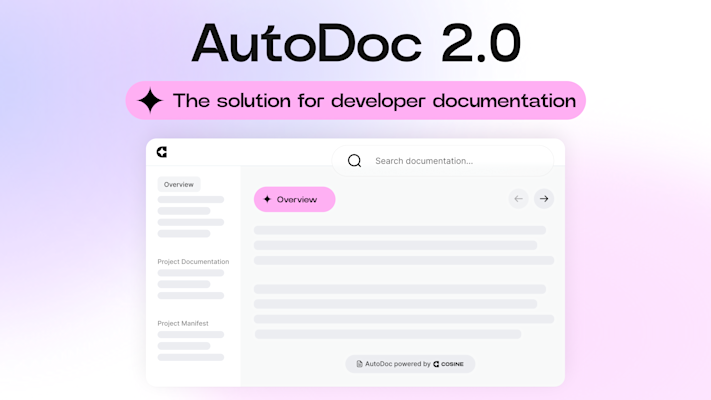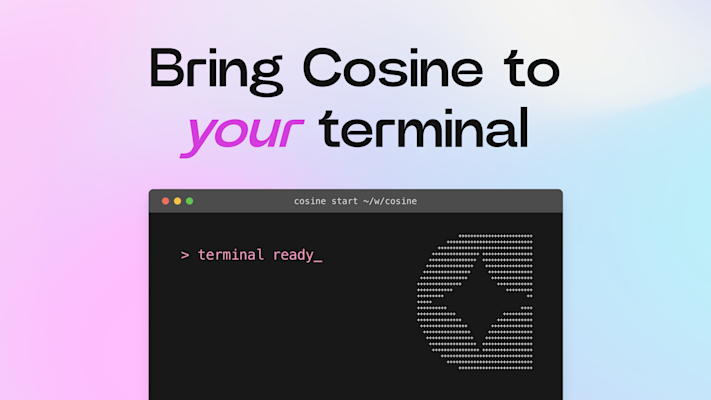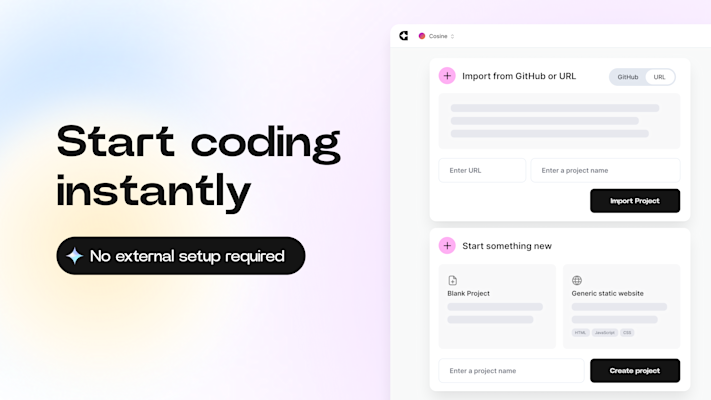A year ago, we brought Cosine out of the editor and rebuilt it in the cloud. At the time, we were one of the first VS Code extensions that acted as an agent. The choice to step away from VS Code let us harden our agent for real engineering work, from enterprise controls, deep integrations, and a remote-first workflow that meets teams where they collaborate.
In the cloud, we proved our Genie 2 model could operate like a disciplined teammate. Our security-first architecture means your code and prompts stay within your trust boundary while Cosine still plugs into the tools you use every day.
Now we’re bringing Cosine back to VS Code, with everything we learned.
What have we changed?
When we pulled our original VS Code Extension from the store, it looked a little like this:
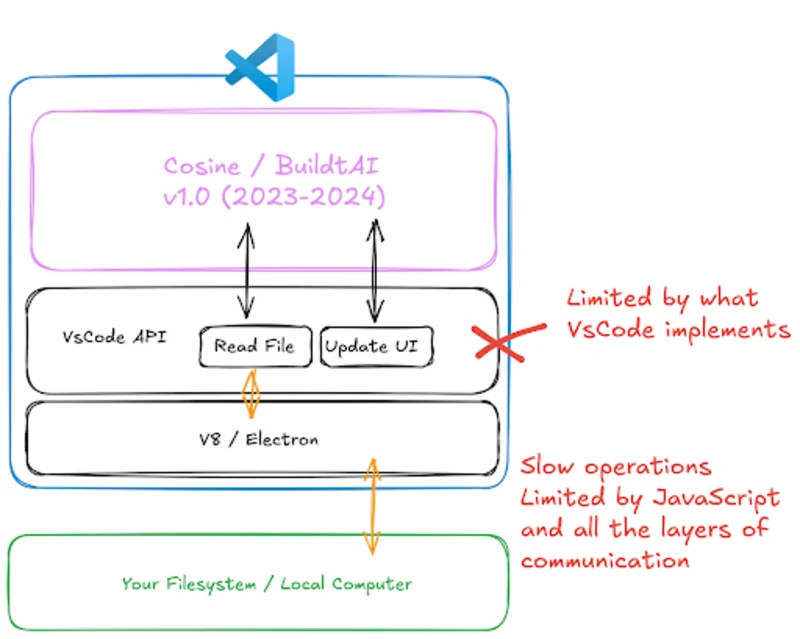
We built several supporting technologies, from custom vector databases to bundling in entire supporting C++ libraries in WebAssembly. Building in VS Code was far too constraining for us. We couldn’t build the level of coding agent that we have today with those limitations.
So why are we back?
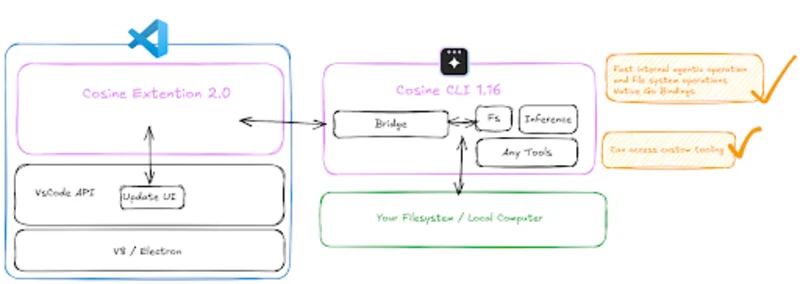
For Cosine VS Code 2.0, we have an ace up our sleeve. A mechanism to achieve the toolset required to interact with the full power of the Cosine Platform. The Cosine CLI. The CLI is a Go binary that lets us embed natively with the OS and build out tooling that is fast, robust, and customisable to the needs of the Cosine models. The binary and tooling embedded into the Cosine CLI is exactly the toolset that we train in our Reinforcement Learning loops in production, and is the same set of tooling that achieved SOTA coding results. We’re able to control the agentic loop much more closely and provide exactly what is needed to the model at any time. This has allowed us to come back to VS Code with a very light bridge that interacts with the CLI rather than the VS Code API.
But it doesn’t stop there…
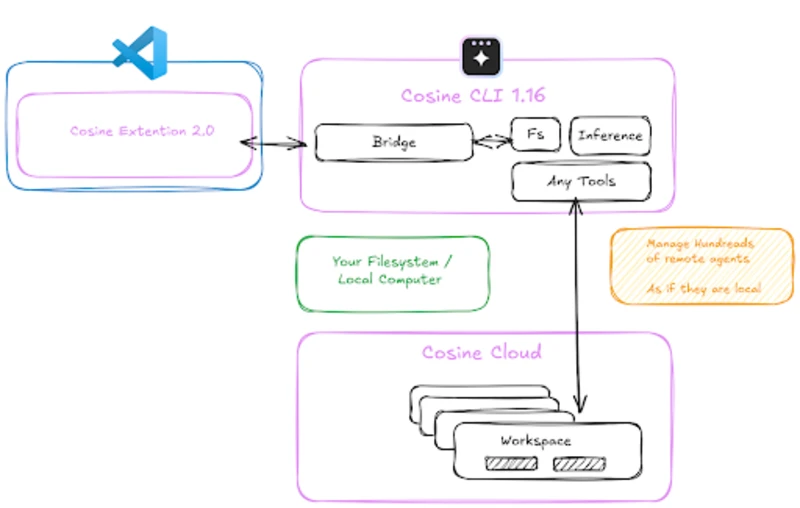
The real power of the Cosine Platform lies in its ability to use the same interface to interact with hundreds of remote agents, all managed within the Cosine Platform, just as if they were running locally.
Now you can do the same from VS Code.
Jump back in
If you tried Cosine in the cloud, this will feel instantly familiar, only faster, closer to your code, and infinitely more “flow-friendly.” Write tests, refactor safely, scaffold services, or run complex, multi-step edits across your repo.
The VS Code bridge speaks directly to the Cosine CLI, so every action uses the same hardened toolchain and policies we run in production. It’s your editor, but now with a disciplined teammate inside it.
Quick Start:
Install the Cosine CLI
Verify install: cos --version
Install the VS Code extension
Open a project in VS Code
For more information, follow our guide in the official docs.
We’re happy for Cosine to be back in VS Code. Open your editor, install the extension, and ship something within minutes.
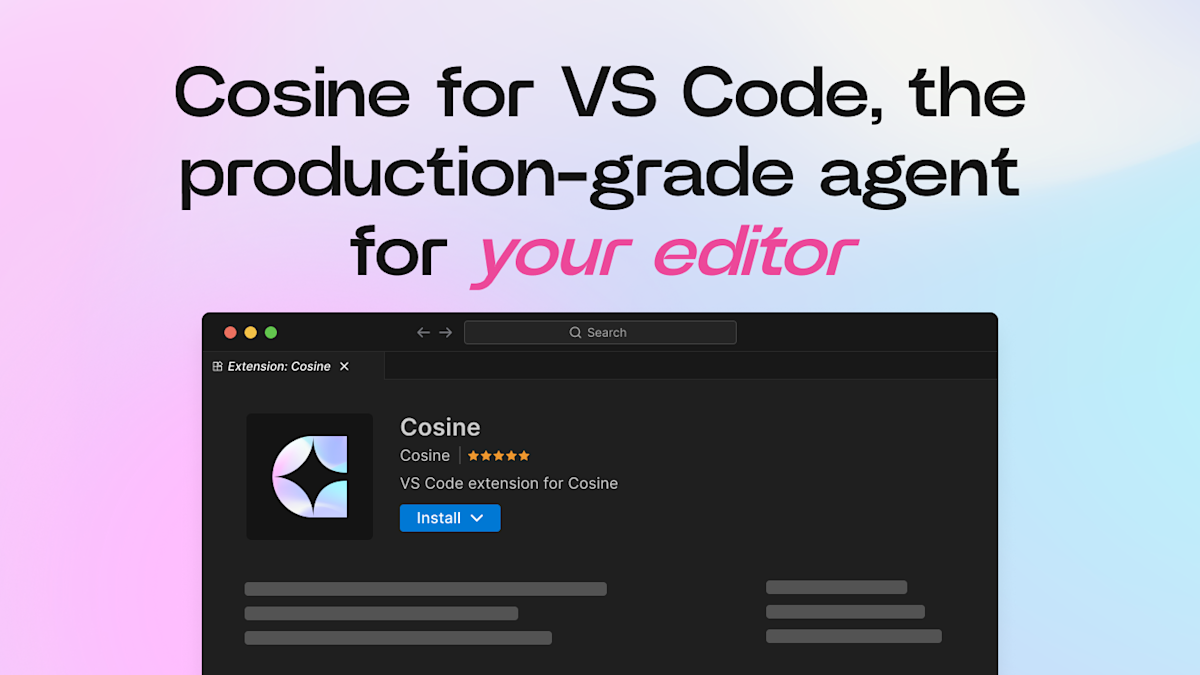

 @PandelisZ
@PandelisZ 